Celebrating Janai Purnima in Syangja
Experiencing The Real Nepal
There are some holidays which are meant to be spent in major cities. The Bisket Jatra or the Rato Machhindranath Jatra are festivals which would lose their intensity and flavor if imitated in one of the more remote villages of Nepal.
There are other religious Hindu holidays, however, where the intimacy of a small community brings out the true essence behind the day.
Janai Purnima is a Hindu holiday which is celebrated throughout the country. But being in a large city such as Kathmandu or Bhaktapur would dilute the importance and significance of the day. With lines of people queuing to reach the temples, most of your energy will be spent elbowing your way to the pagoda steps.
Far away from the masses of Kathmandu, in the valley of Syangja, the small village of Khanidanda celebrates Janai Purnima without crowds or tourists. But with only the family and friends of the community.
Nepal isn’t just made up of Hindus. Read about celebrating Eid in Nepal here!
What is Janai Purnima?
Janai Purnima is a holiday which is celebrated across all castes in Nepal. The way each ethnic group observes this Hindu festival couldn’t be more different.
In the Terai Region of Nepal, the holiday goes by the name of Raksha Bandham or simply Rakhi. More commonly this festival is called the “brother and sister” holiday. The word “Raksha” means to bond and “Bandham” means protection. On this day siblings will join together, pray, tie bracelets to each other’s wrists, and promise to care for each other. Gifts such as money and fruits are also typically given to the sister on this day.
If you have spent some time in South Asia, you are sure to have noticed that men of certain castes wear a band across their chest. This sacred thread, known as the Janai, is first given to Chhetri and Brahmin boys after completing Bratabandha, a rite of passage to becoming a man.
After completing this ceremony, men will wear a cotton thread of three strands for the rest of their life. The strands represent body, speech, and mind. The significance of the bands indicates the mastery of these three disciplines. Once a year these strands will be changed on the full moon (Purnima) hence the name “Janai Purnima”.
Those who are not male or belong to other castes will be given a bracelet known as a “Doro” on Janai Purnima. This bracelet also represents safety and protection. A Doro is worn until the Laxmi Puja (Diwali) during Tihar. At this time the bracelet will be removed and then be tied to the tail of a cow.
Going to Pokhara? Read about hiking to the World Peace Pagoda from Damside here!
Bringing The Village Together
Nestled into the mountains of Syangja, Khanidanda slowly eases into Janai Purnima while the fog still shrouds the entire village in white. At 8 am in the morning, only a pujari (holy man) can be seen at the local temple making the preparations for the holiday.
Using white, red, and yellow powder, the Hindu holy man begins to create mandalas on the concrete in front of the shrine. While he is busy creating these colorful ornate geometric symbols, families from all across the hilltop begin to arrive at the humble temple.
Carrying various forms of prasad (offerings) to be blessed by the god, the villagers place manure, fruits, and rice before the holy man. Most importantly, the family members bring their long and short strands of cotton to be made into sacred Janai and Doro.
Looking to go even more off the beaten path? Check out the villages surrounding Panauti!
Blessing the Strands
Family by family, the strands of cotton are draped across three stalks of bamboo. Beneath these pieces of wood is a large bronze basin used to catch all the holy water which has been used to bless the Doro and Janai.
As the puja (worship) begins with the pujari reading from the Puranas, chairs were set out for those devotees willing to hang around for the blessing to be over. Unlike a church or a mosque, people typically chat and gossip while the prayers are taking place.
Much like waiting for laundry to be done, most of the worshippers wait crosslegged for the end of the puja. All the while, the assistant to the pujari makes his way through the temple grounds sprinkling idle onlookers with droplets of the holy water.
Planning on traveling to Tansen? Read about what to do in Palpa here!
Collecting the Janai
After a few hours of listening to the chanting of the pujari, the worship comes to a close. Like all Hindu worships, the end is marked with all devotees outstretching their arms and shouting “Jai!”. Jai is pretty much the Sanskrit equivalent of saying “viva”. This phrase is often accompanied by a country name, god, or simply by itself at the end of a puja.
The simple bracelets and bands which were placed over the bamboo stakes are now covered in garlands, holy water, milk, and flowers. The basin below the Doro and Janai is now completely filled with orange water due to the dye of the bracelets. The villagers will come clambering to fill their bottles with this holy water so that their bodies can also be blessed.
The orange holy water is just a fraction of the prasad taken back to the homes of the villagers. Hindus will also take bananas and even manure so that their fields will also be looked after by the gods.
Looking for a complete guide to the town of Panauti? You can find one here!
Tying the Knot
Each of the threads will then be taken off of the bamboo racks in bunches. One person will hold out the orange bands until each of the families can identify which ones belong to them. The bunches of Janai and Doro are then taken back to their respective houses to be distributed amongst the family members.
Janai Purnima is a simple holiday but considered one of the most sacred for Hindus. In large cities, men can be seen taken baths in the crowded rivers in order to cleanse themselves for the next year and women line up to get their cotton strands blessed by swamped holy men.
In a small village like Khanidanda, however, Janai Purnima is more of a family affair. Households from around the valley all come together to chat, laugh, and worship together.

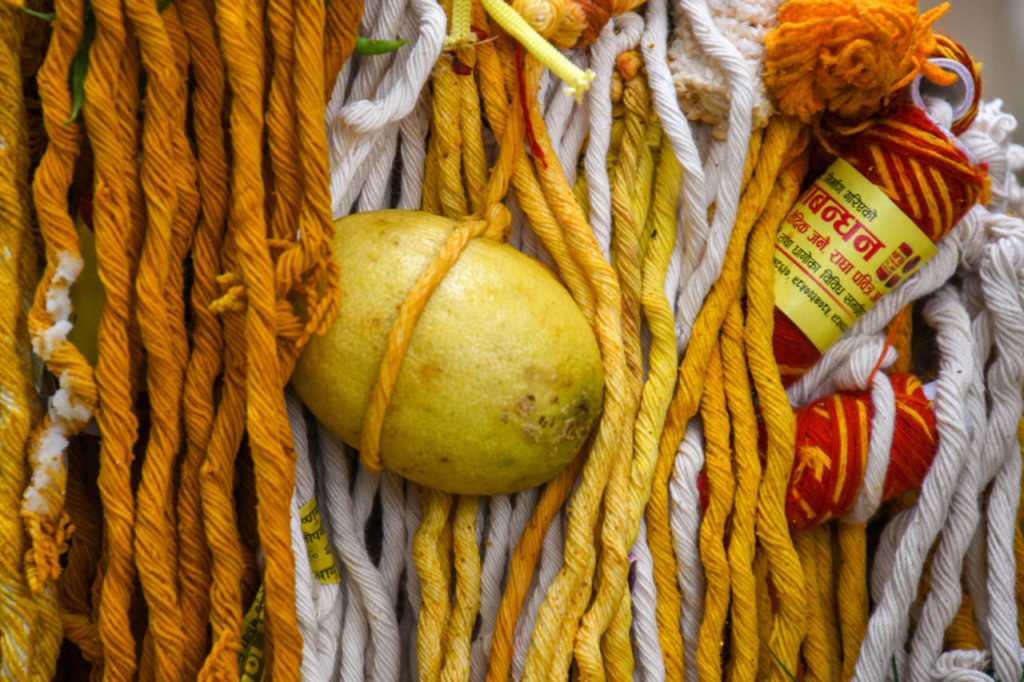
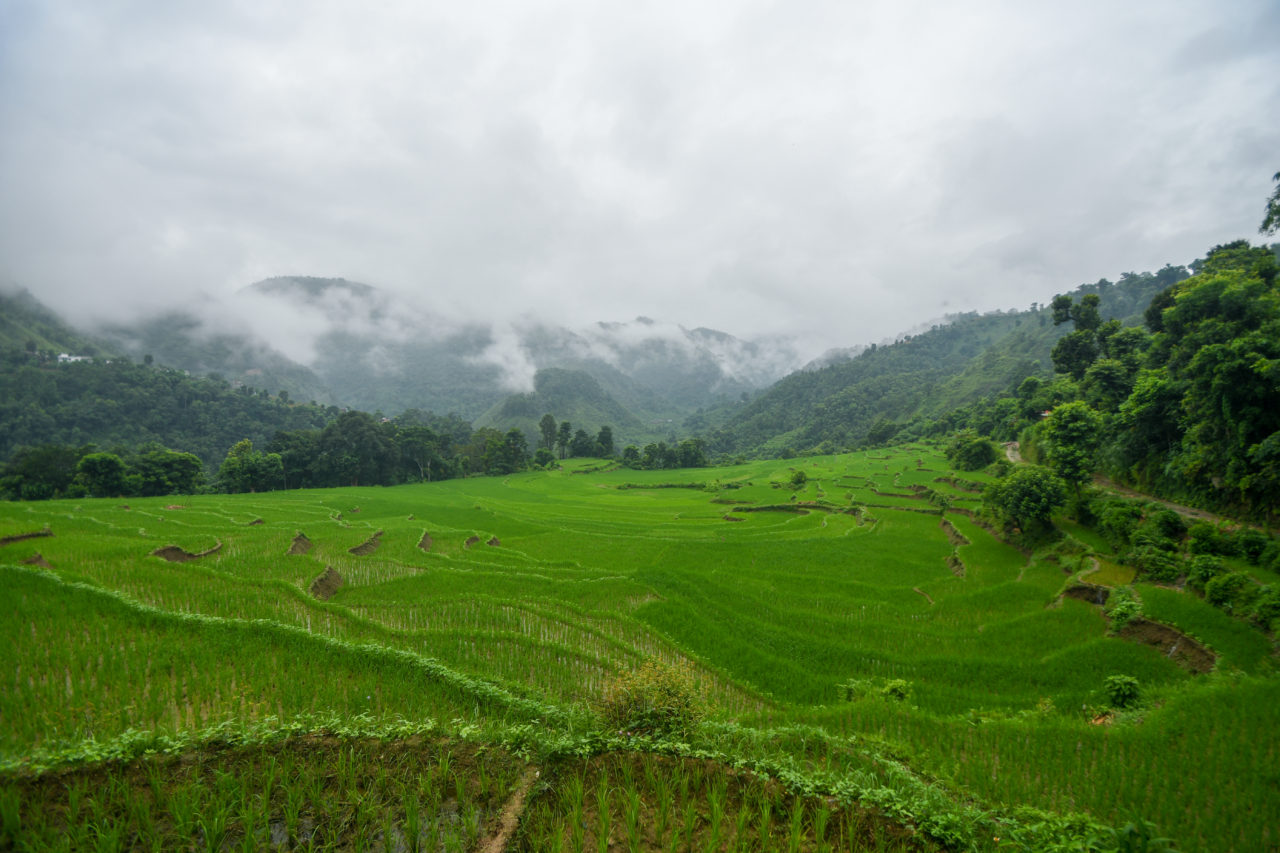
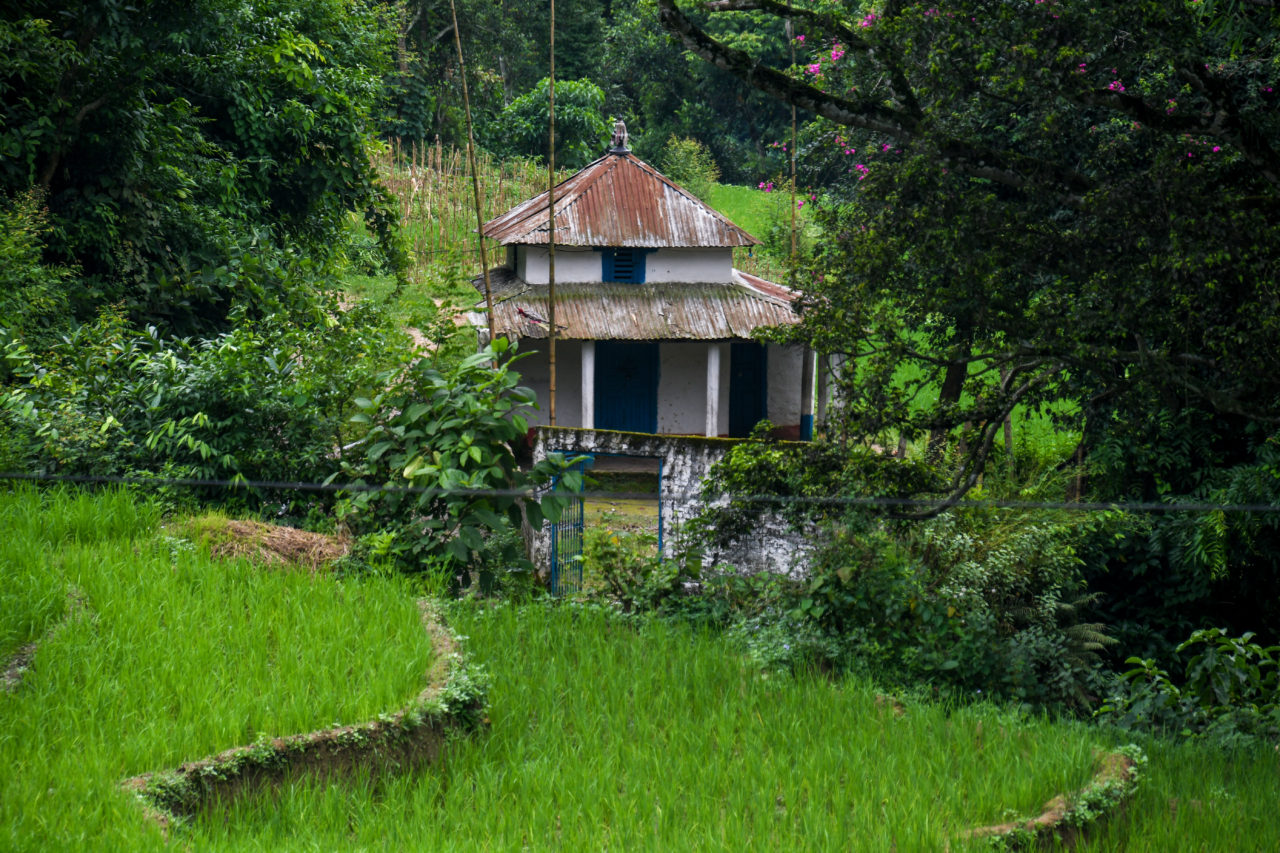
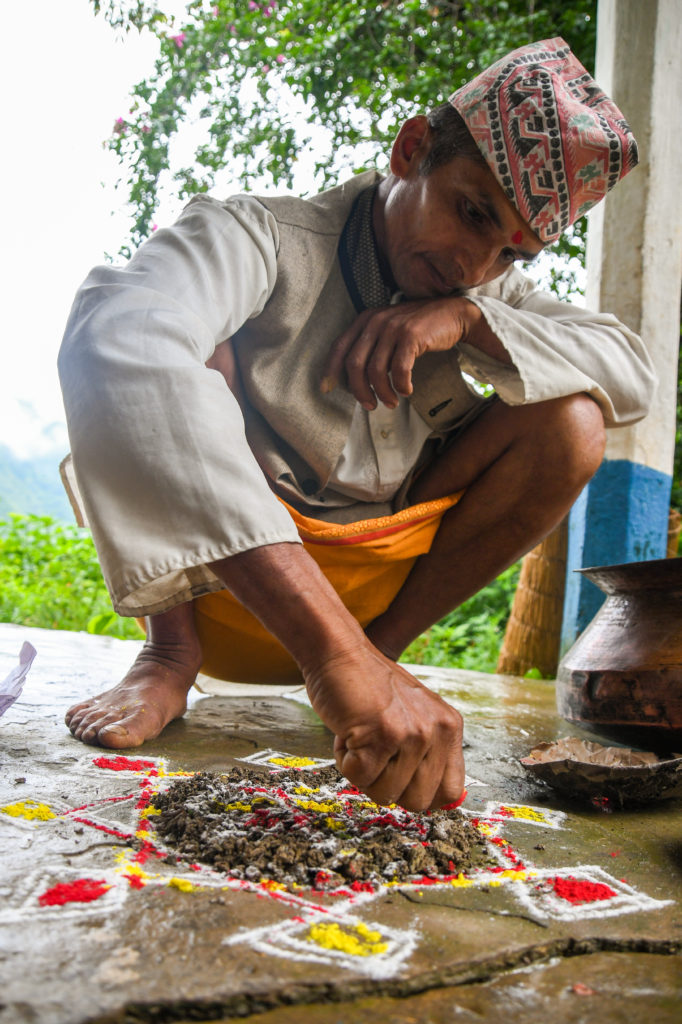
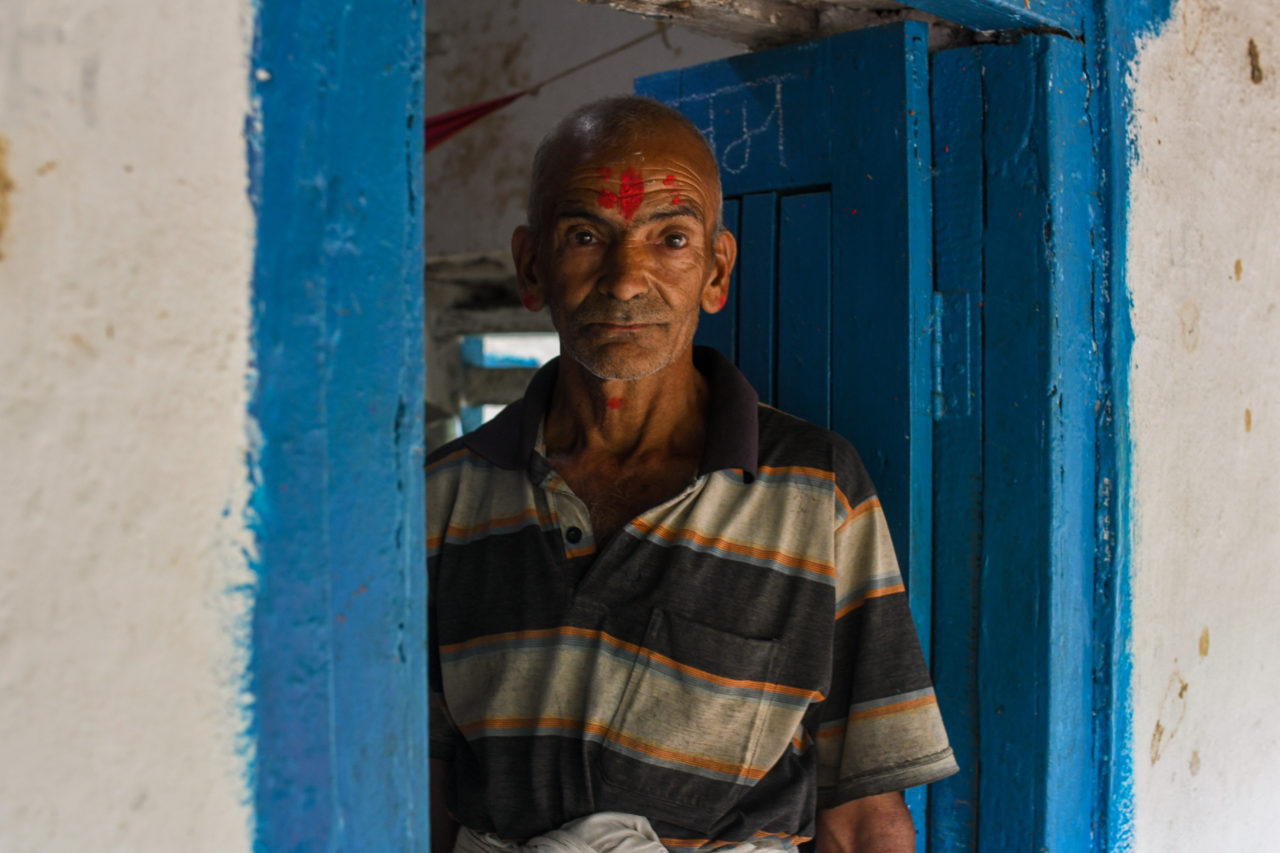
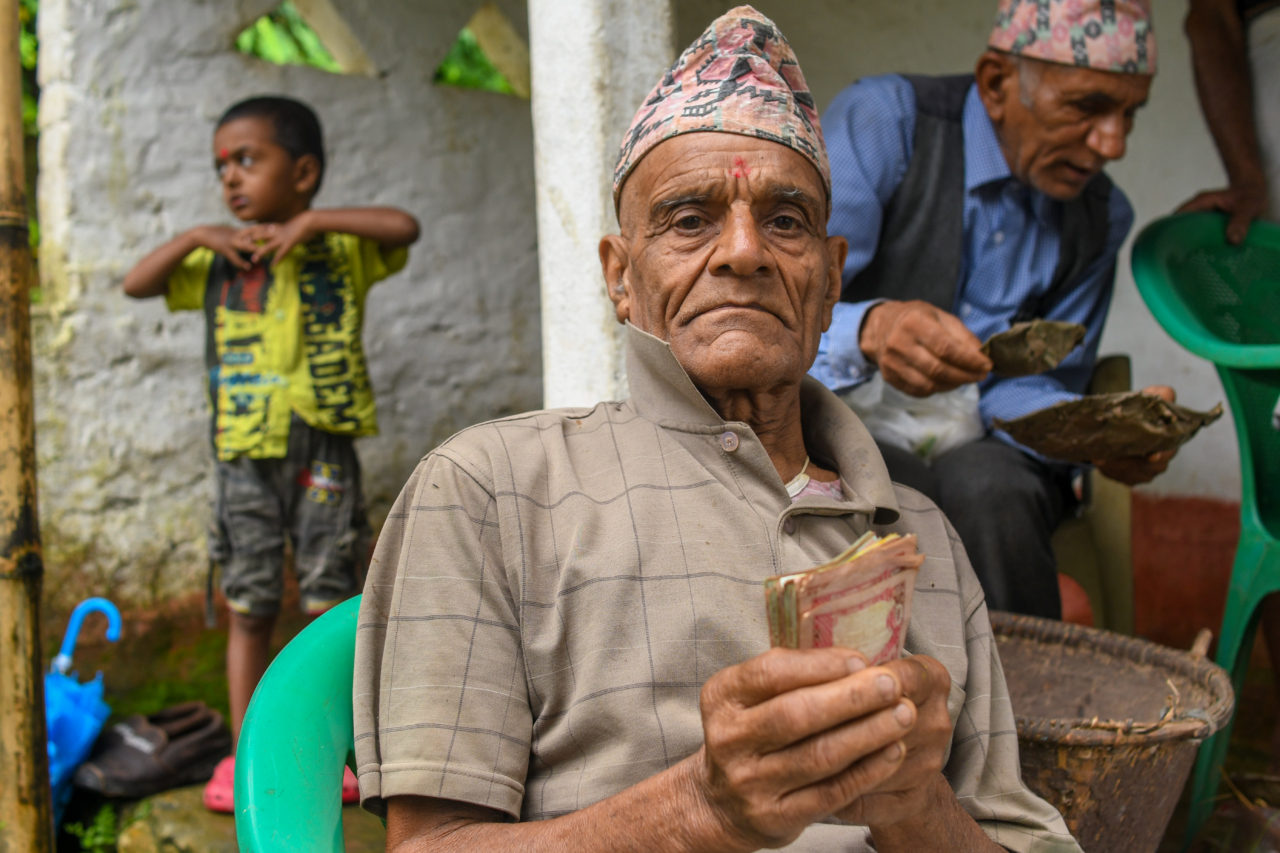
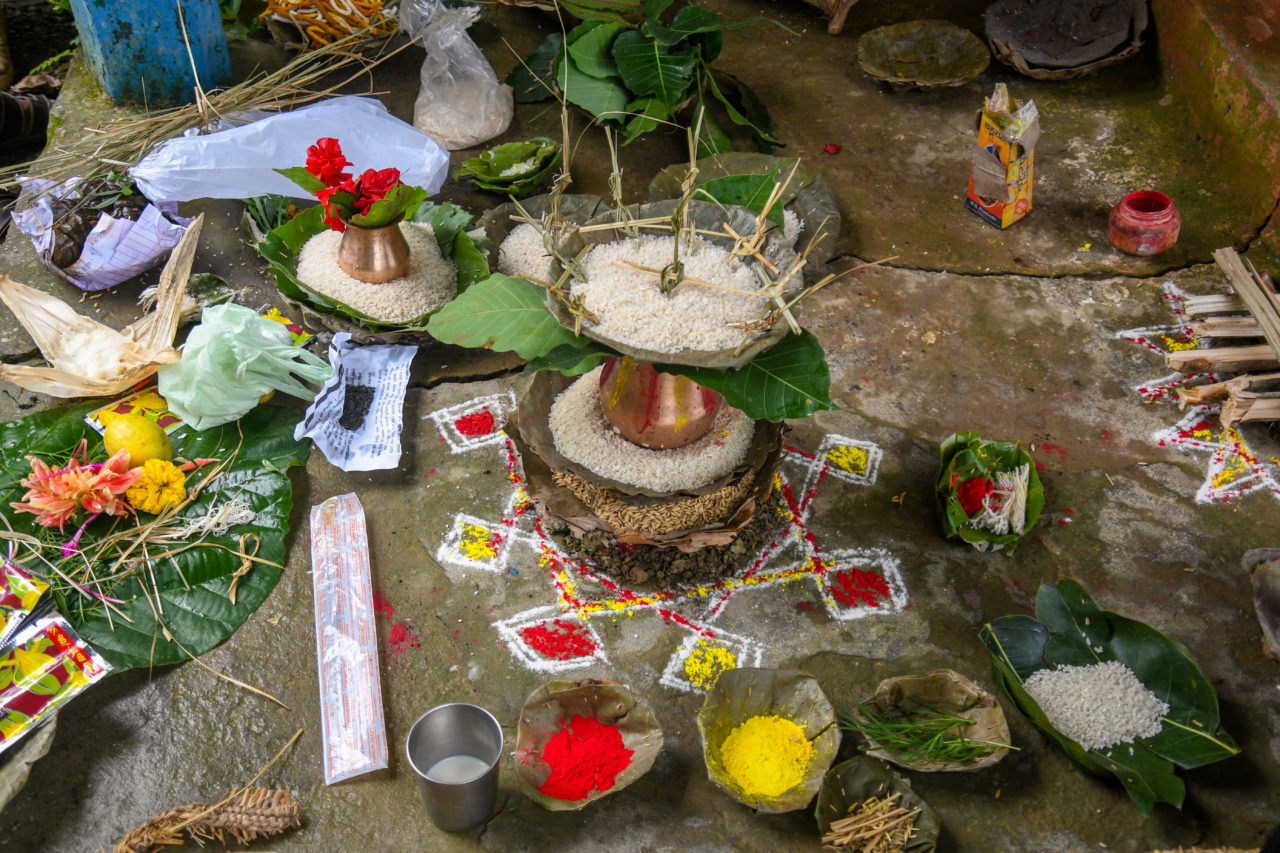
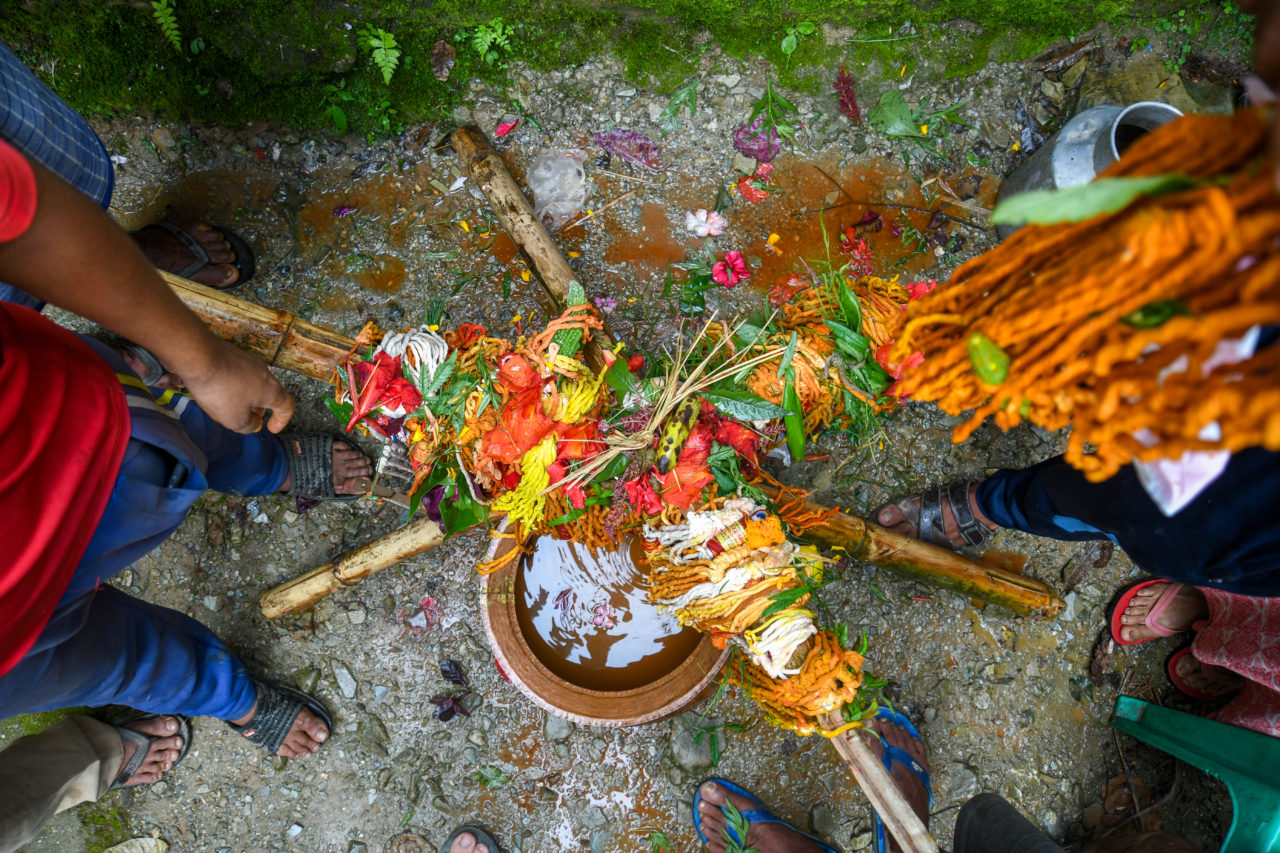
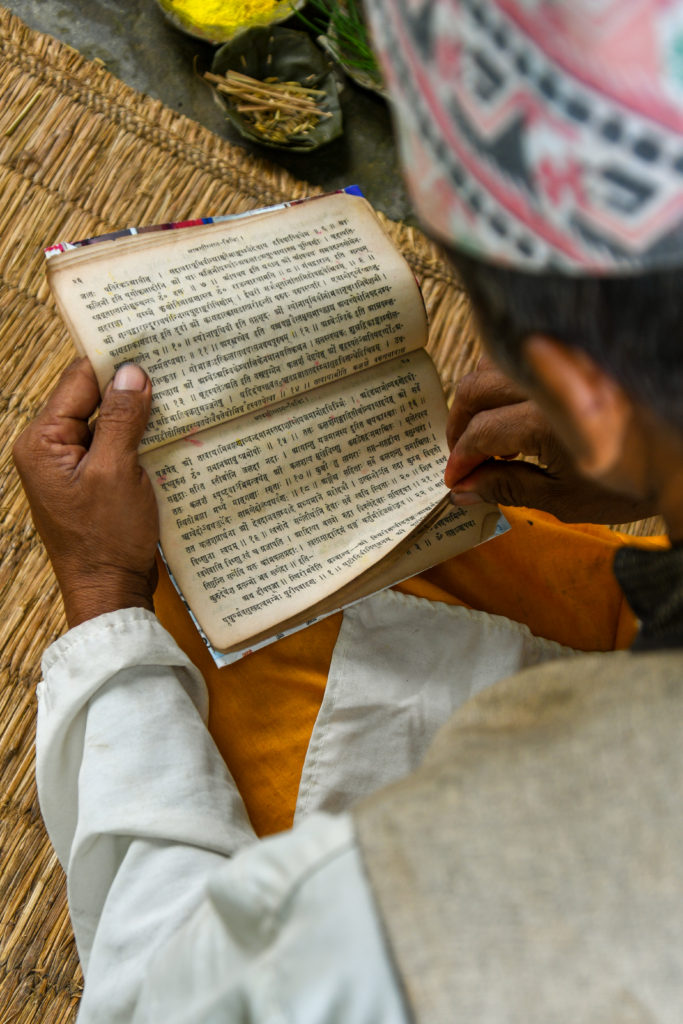
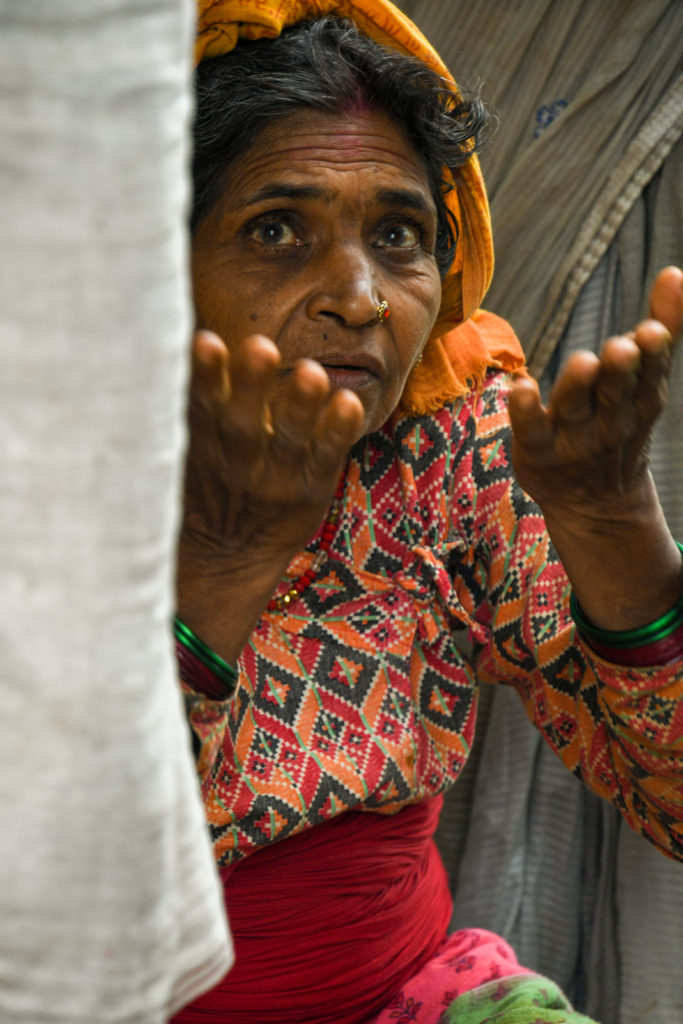
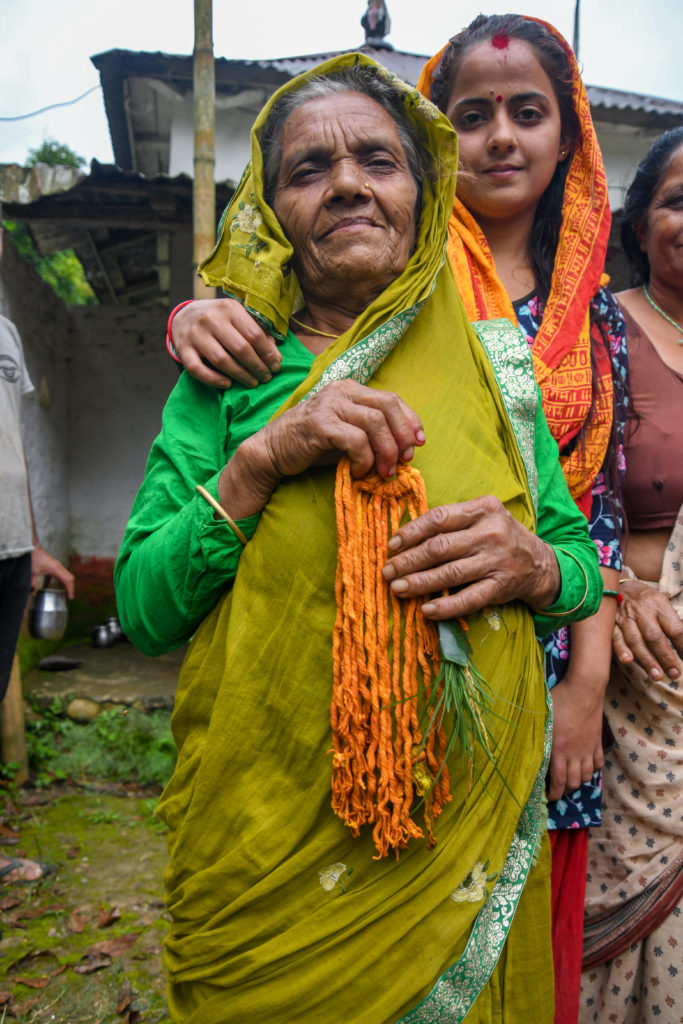
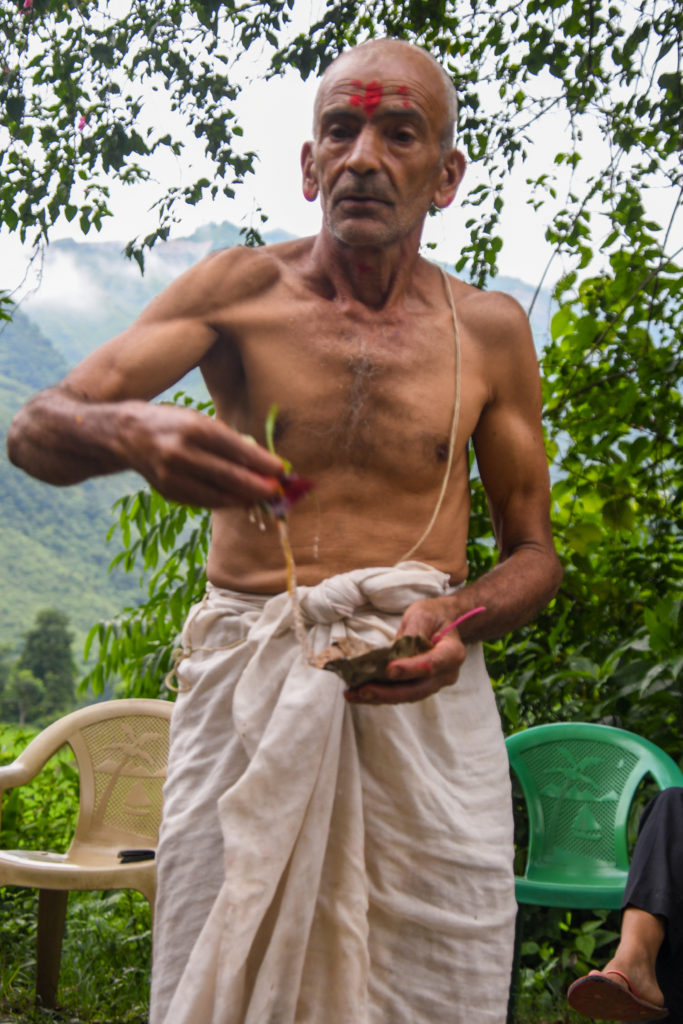
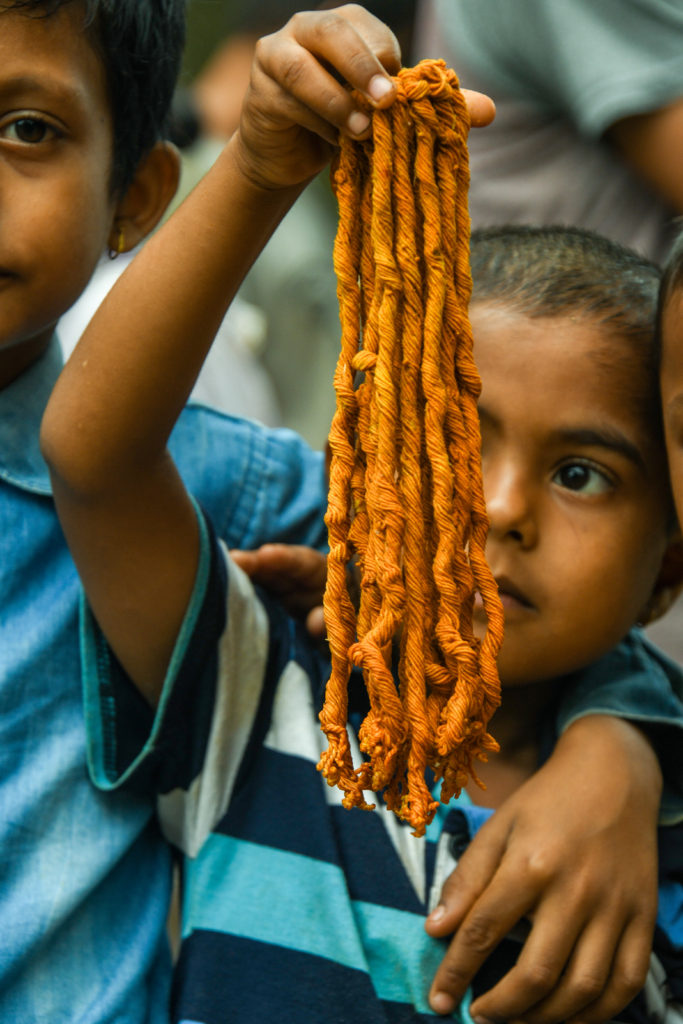
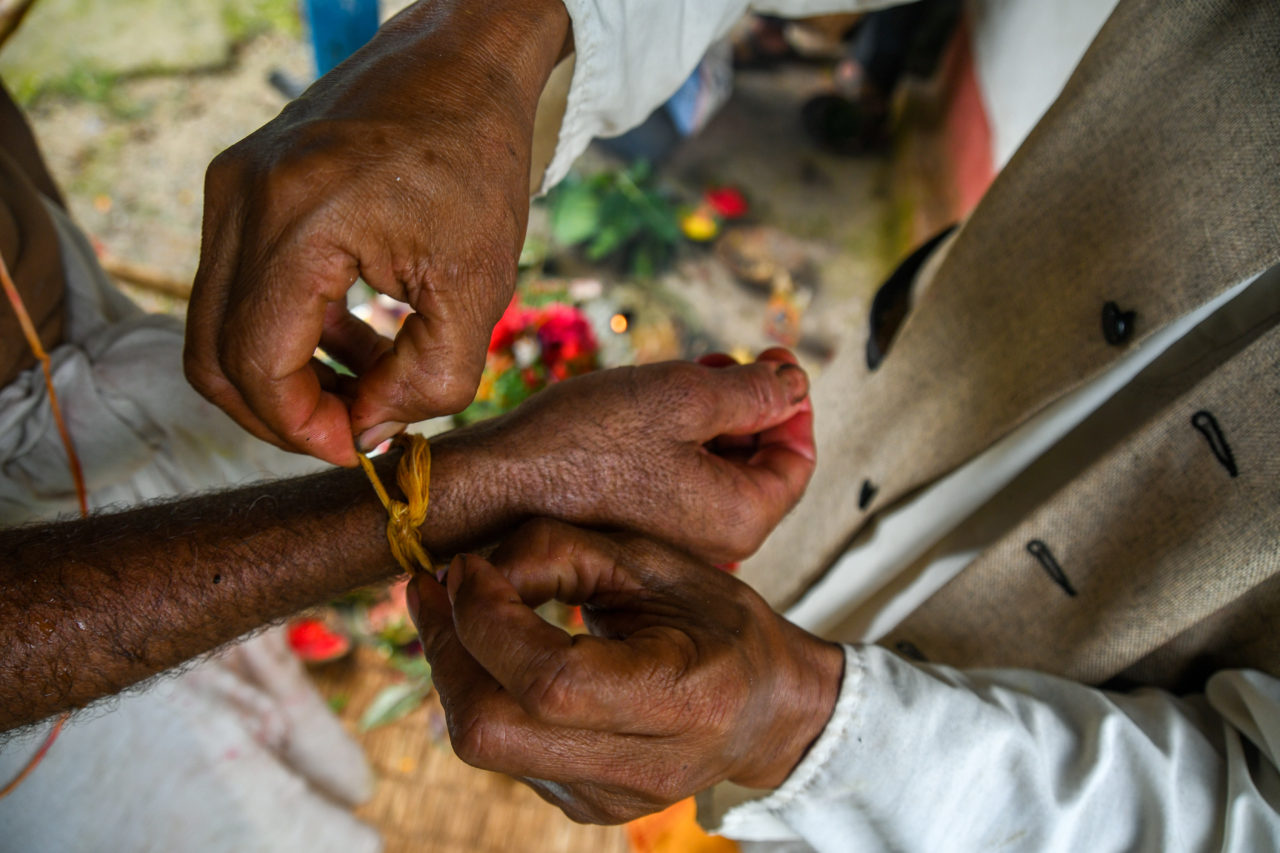
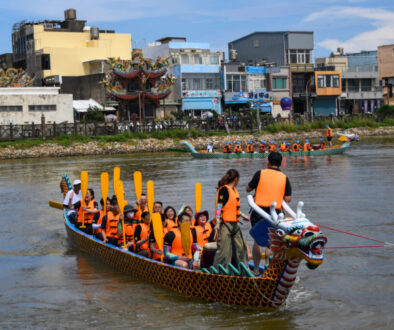
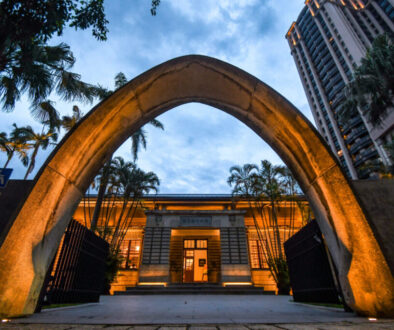



Traveling to the Matepani Gumba (Buddhist Monastery) In Pokhara
August 25, 2019 @ 8:03 pm
[…] Get a taste of rural Nepal by reading about Janai Purnima in the countryside! […]
Krishna Janmashtami in Tansen Palpa - ORPHANED NATION
August 29, 2019 @ 6:06 pm
[…] Want to see what it’s like celebrating holidays in a small Nepali village? Read about celebrating Janai Purnima! […]
The Bhagwati Jatra of Tansen Palpa - ORPHANED NATION
August 31, 2019 @ 12:10 pm
[…] Want to read about more traditional festivals in Nepal? Check out Janai Purnima here! […]